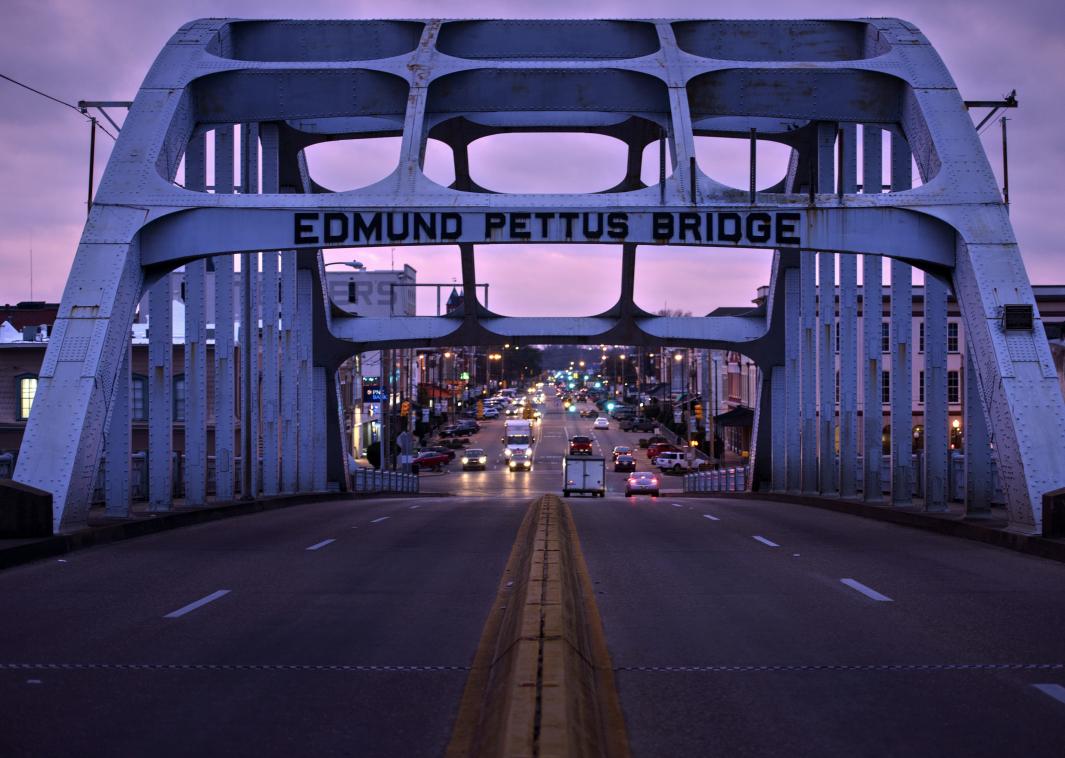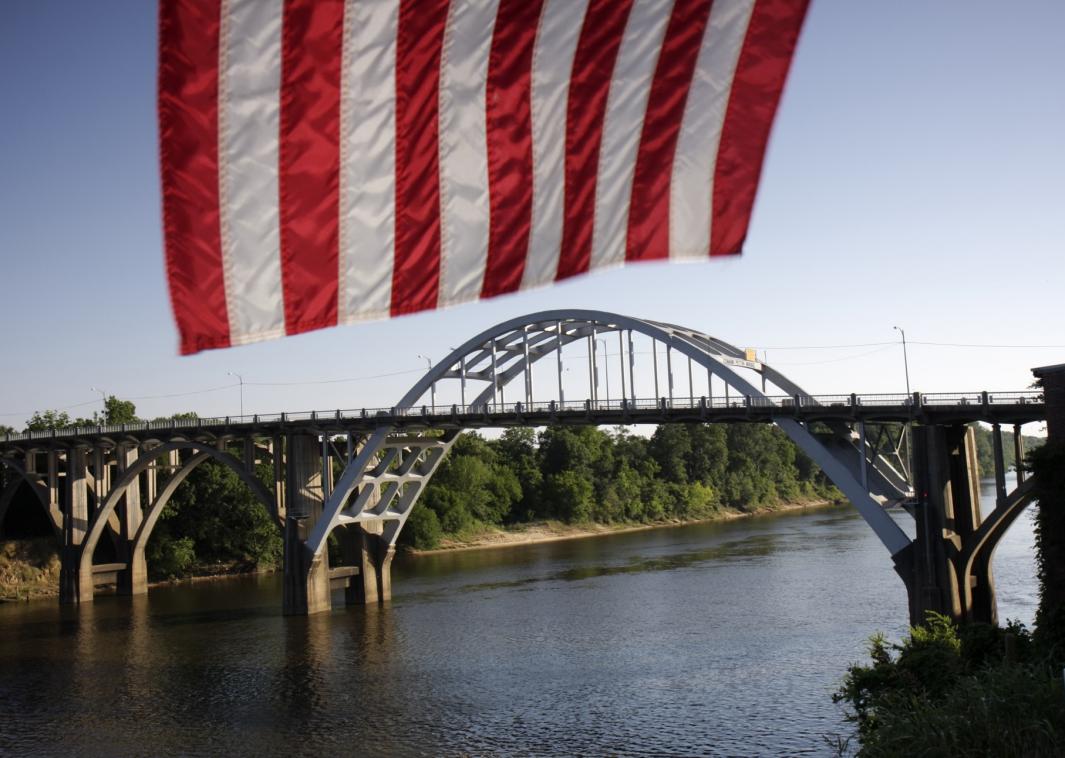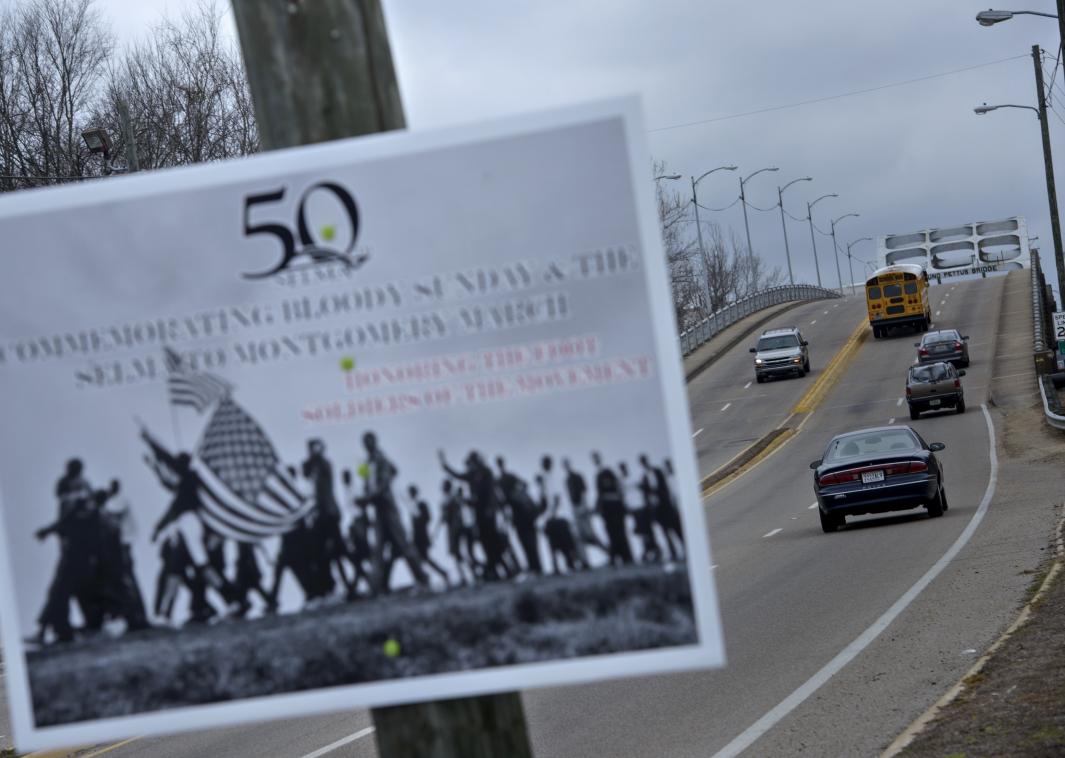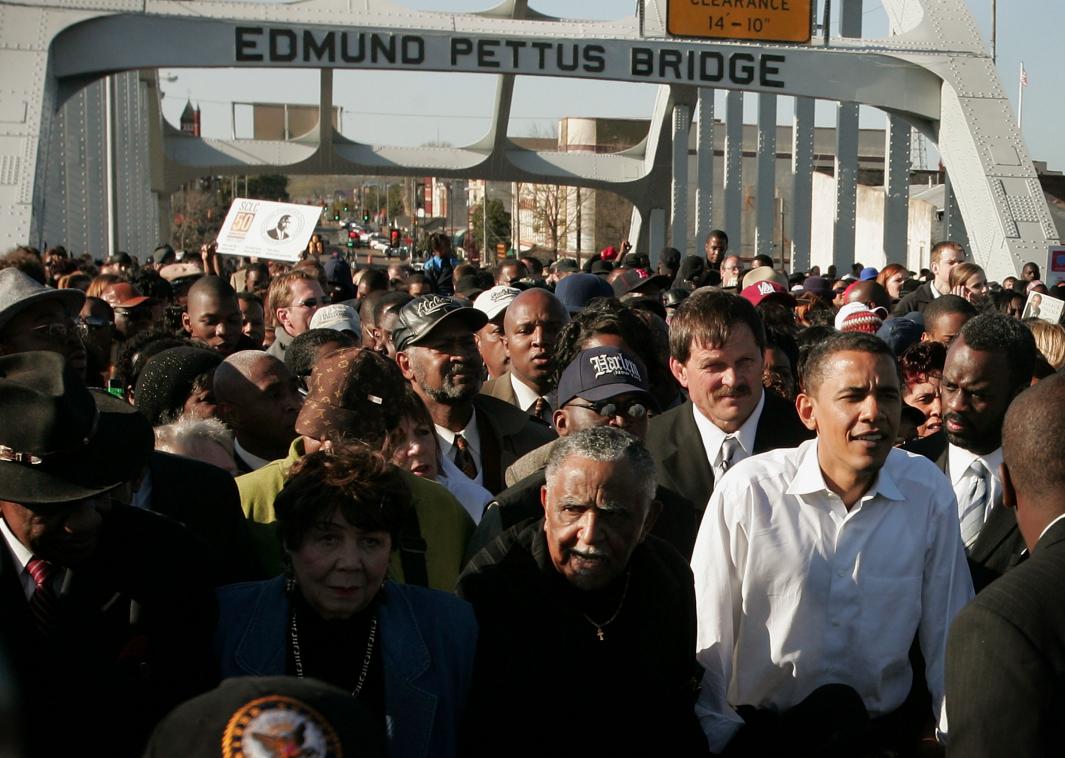How the Design of a Selma Bridge Became a Metaphor for the Civil Rights Movement

Photo by Brendan Smialowski/AFP/Getty Images
This weekend, thousands of people will gather in Selma, Alabama, to march over the Edmund Pettus Bridge. The 50th anniversary Bridge Crossing Jubilee will commemorate the march known as Bloody Sunday, the March 7, 1965, attack by Alabama state troopers on roughly 600 nonviolent demonstrators, who were protesting voter suppression and police brutality, as they exited the bridge.
But before it was synonymous with the civil rights movement, the Edmund Pettus Bridge symbolized the mind of the white South and the sometimes paradoxical relationship between progress and history.

Courtesy of the Alabama Tourism Department
The bridge, which opened 75 years ago this spring, is a four-lane arch bridge that traverses the Alabama River. Ten of the bridge’s 11 spans are made of reinforced concrete arches; the central span, the longest and most recognizable, is made of steel. Selma native Henson Stephenson designed the bridge, which replaced a two-lane structure built in 1885 and designed for mule traffic hauling wagonloads of cotton, the former lifeblood of the city.
But as modern as the new bridge was in 1940, its namesake was more in line with the city’s past. Edmund Pettus was a lawyer, a general in the Confederate army, a U.S. senator, a distant cousin of Jefferson Davis, and Grand Dragon of the Alabama realm of the Ku Klux Klan. Progress, to Selma city leaders, still reconstituted the structures of white power.
Selma is built on a bluff overlooking the Alabama River, so the west side sits higher than the east side. This fact, compounded by the requirement that the bridge leave room for water traffic to pass below its center, means the roadway inclines toward the center of the bridge before descending on either side.

Photo by Brendan Smialwoski/AFP/Getty Images
So when the marchers, led by Student Nonviolent Coordinating Committee chairman John Lewis and Southern Christian Leadership Conference chief field lieutenant Hosea Williams, walked out of Selma and first started their climb, they could not see the bridge’s end. Only when they reached the crest of the bridge could they finally see what lay in front of them: 150 armed policemen and mercenary segregationists, gathered at bridge’s end, strapping gas masks on over helmets that bore the Confederate flag, mounting horses, and hefting billy clubs against open palms. Though he never broke stride at the sight of the waiting police, Williams asked Lewis if he knew how to swim. They were 100 feet above the Alabama River.
The ensuing attack cast the bridge in the symbolism that endures to this day. The city’s first black attorney, J.L. Chestnut, opened his memoir with the observation that the Edmund Pettus Bridge is a metaphor for the whole movement: When they started, they could not see the other side, yet they persisted.
The annual Bridge Crossing Jubilee now serves as staging grounds for politicians. Both President Barack Obama and Hillary Clinton made early campaign salvos in Selma during the 2007 march. This year, for the 50th anniversary, Obama will return to Selma, along with almost 100 lawmakers and a gaggle of entertainers and celebrities.

Photo by Scott Olson/Getty Images
Moments like the Jubilee or the release of the movie Selma bring spells of attention to the town and a burst of tourism dollars that the city depends on. But the paradox of progress and history persists. In 2011 the bridge was deemed functionally obsolete, meaning the design is not suitable for its current use, though it remains open. In 2013 it was added as a National Historic Landmark.
There’s a movement brewing now to change the name of the bridge. It would only be the start.
